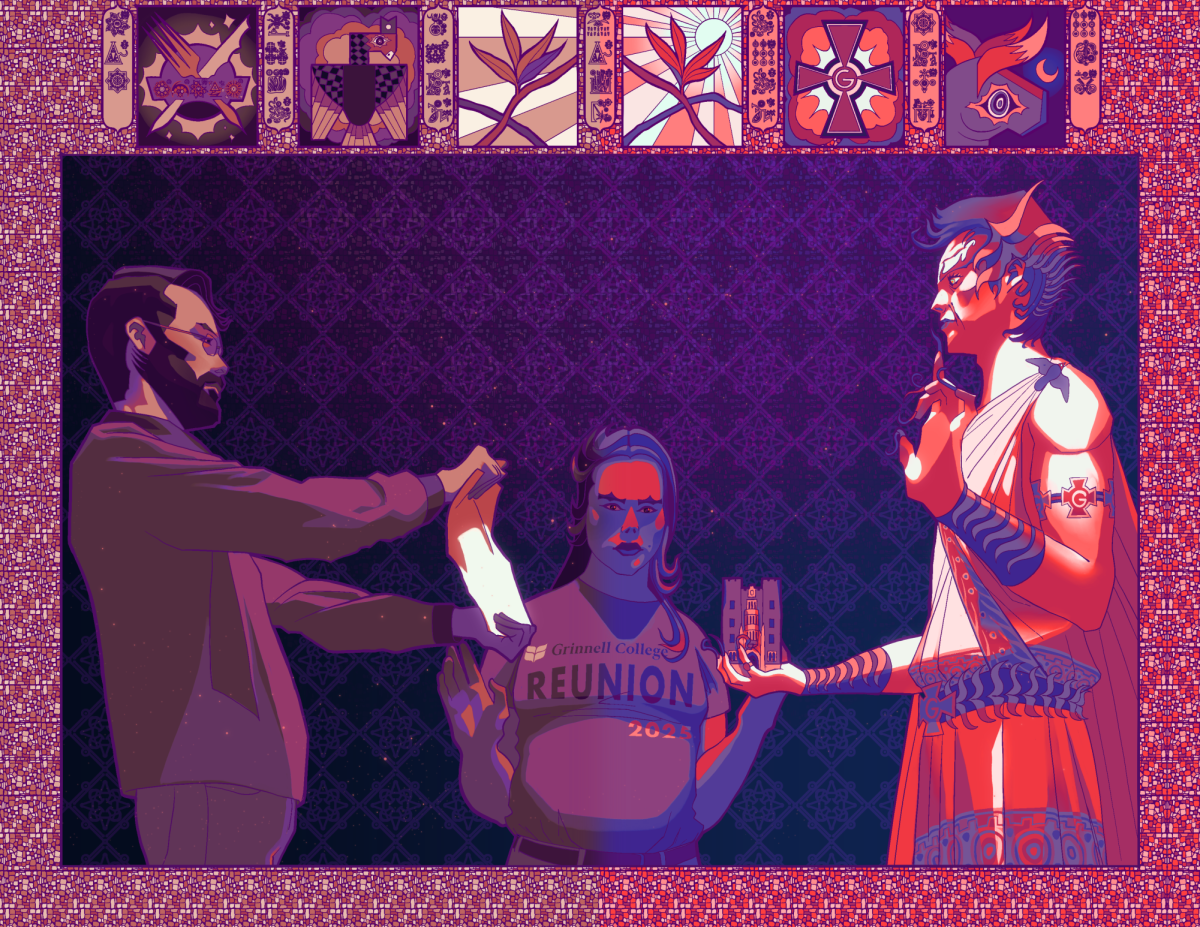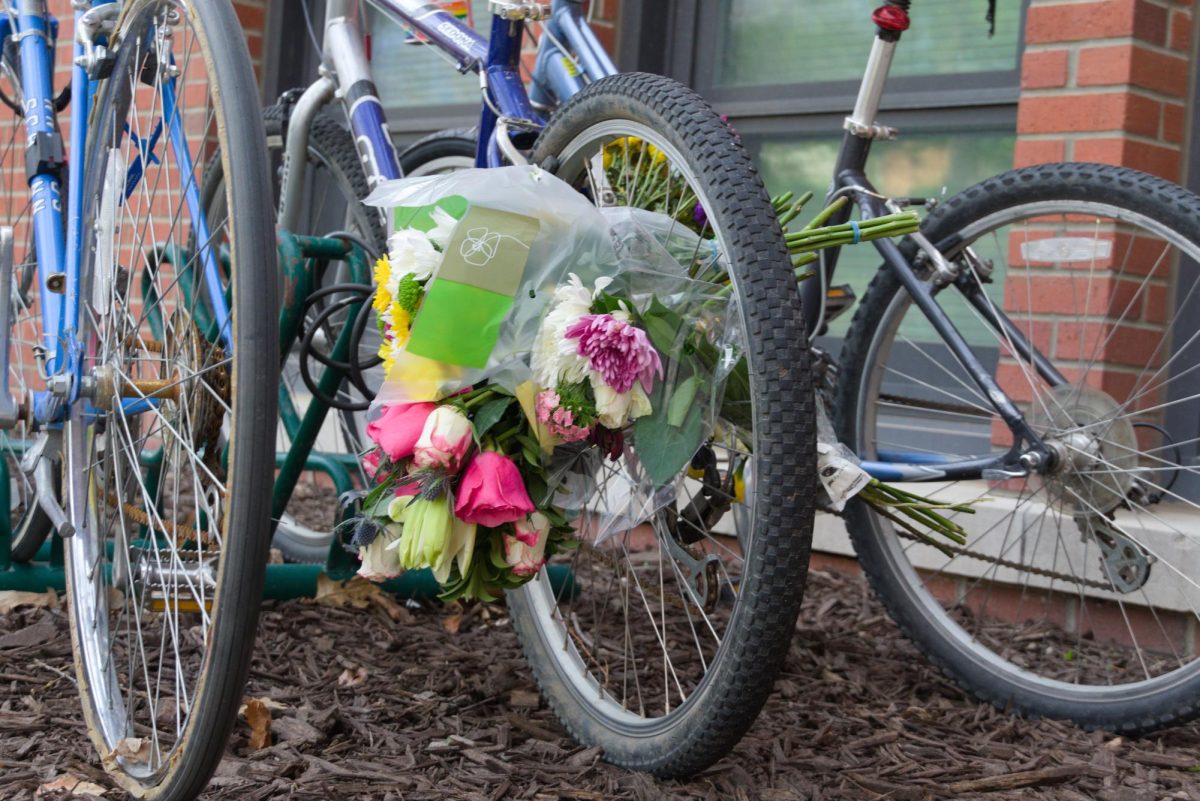
I went to a workshop on street harassment around the world on Monday. It was very well-attended, which made me happy and also a little sad. The workshop, an activity for Sexual Assault Awareness Month, was the result of a collaboration between the Language Learning Center and the Peer Educator program.
I remember fairly clearly the first time I was catcalled. I was 14 or 15, and I was out training for the upcoming cross-country season. We were staying with family in rural England, and the road I was on was a narrow dirt path between two vast expanses of field. There was no one else around, except for the occasional passing car, and it took me a second or two to register that a man I’d never seen before had whistled at me from a truck as it went by. Suddenly very aware of how alone I was, I turned around and went home.
The coordinators of the workshop made it clear that the purpose of the event was to build a sense of empowerment, not create more fear, and in my opinion, they were successful in that goal. That being said, I always find it saddening to know the extent to which people who are likely to experience harassment are already familiar with situation-specific strategies to get away or cause a diversion.
When I was in high school, I sang in a madrigal choir. At each performance, we all wore faux-Renaissance tunics and dresses, heavy garments made of velvet and grosgrain fabrics that we liked to make fun of, but they did add a certain air of authenticity in the eyes of the audience. One of the other members of the choir, an older alto who I respected and admired greatly, was harassed by a man in a passing car as she walked to a performance. She flipped him off. We laughed about it afterwards, but I kept wondering what the thought process was that would lead someone to whistle and shout at a teenager wearing an old costume and carrying a chorus binder. Logically, I understand that it’s a manifestation of hegemonic masculinity, an assertion of dominance, but I still don’t get it.
I know that I tend to operate in a fear-based manner when it comes to things like street harassment. I rarely, if ever, stand up for myself in these kinds of situations, because my mind immediately goes to the worst-case scenario. I guess that this means that I’m perpetuating a cycle, but I try not to feel too bad about it. I’m doing the best I can.
I went to Italy on a school trip with my Latin class in my junior year of high school. During our pre-travel training, the female students were warned that we might be called at on the street. None of us, other than the chaperones, spoke Italian especially well. We were instructed to ignore any harassment and move away from the immediate area.
Pretty much every woman I know has a million of these stories. Most people I know who have experienced or are likely to experience harassment while doing their everyday activities are familiar with the universal leave-me-alone signal of head down, face blank, cross the street if you can and walk fast if you can’t. I think about this a lot.
Over spring break, I biked out to McDonald’s one afternoon because I needed to study and I wanted to get off campus. Night fell faster than I’d expected, and as I brought my bike over to the fence, a pickup truck pulled into the dark parking lot. I could hear loud, probably intoxicated male voices from where I was, at least thirty feet away. I locked my bike up as fast as I could and walked as normally as I could to the restaurant entrance, thinking about, out of the items I was carrying, what I could use to defend myself.
At the end of the workshop, we talked a little about finding healthy ways to release rage. I think that this is something that isn’t talked about enough. Once in a while, or maybe more often than that, it is absolutely necessary to punch a pillow or scream into a void or flatten soda cans on the driveway with a sledgehammer. Art, writing, and music can also provide this kind of outlet – I do a fair amount of writing on my own time, although, apparently, I sometimes also co-opt my own column to vent at the world.
This week’s recipe:
Temporary rage reduction toffee
This is a version of a family recipe for butterscotch candy, and there’s nothing especially anger-inducing about it. However, in order to break this into edible pieces, you’ll need to wrap it in a tea towel and hit it with a hammer.
Put four sticks of butter and one cup each of brown and white sugar into a saucepan. Heat to boiling, stirring well, but stop stirring as soon as the mixture boils. Continue boiling until mixture heats to 300 degrees Fahrenheit. Pour onto a baking sheet lined with parchment paper (add melted chocolate and slivered almonds on top, if you want) and refrigerate. Remove from fridge when fully hardened. Wrap the candy sheet in a tea towel and break into 1-inch pieces with a claw hammer or a small mallet.


















































